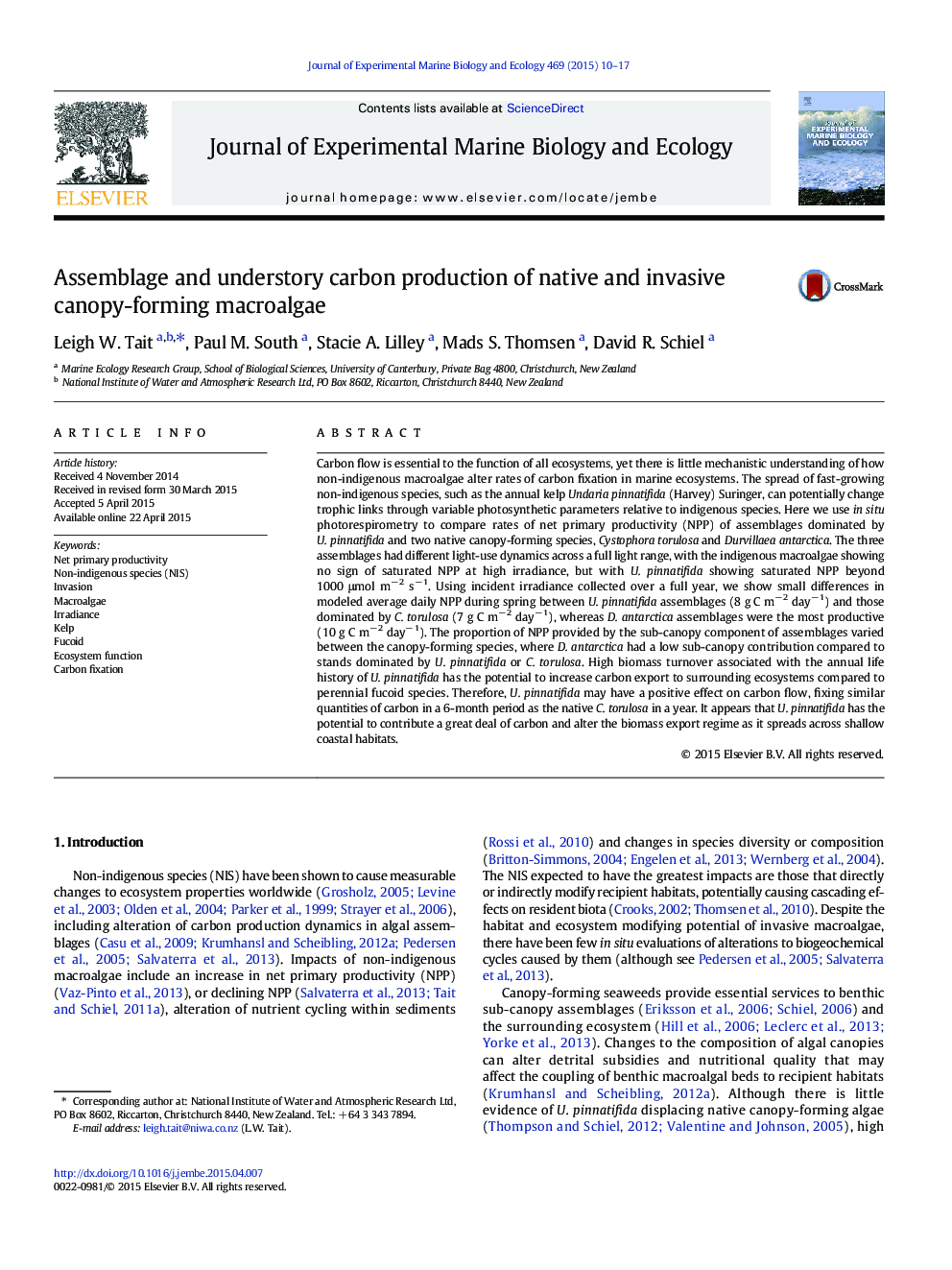| کد مقاله | کد نشریه | سال انتشار | مقاله انگلیسی | نسخه تمام متن |
|---|---|---|---|---|
| 4395413 | 1618406 | 2015 | 8 صفحه PDF | دانلود رایگان |
عنوان انگلیسی مقاله ISI
Assemblage and understory carbon production of native and invasive canopy-forming macroalgae
ترجمه فارسی عنوان
تولید کربن مونتاژ و تولید زیرزمینی بومی و تهاجمی کلاهک ماوراء الطبیعه
دانلود مقاله + سفارش ترجمه
دانلود مقاله ISI انگلیسی
رایگان برای ایرانیان
کلمات کلیدی
موضوعات مرتبط
علوم زیستی و بیوفناوری
علوم کشاورزی و بیولوژیک
علوم آبزیان
چکیده انگلیسی
Carbon flow is essential to the function of all ecosystems, yet there is little mechanistic understanding of how non-indigenous macroalgae alter rates of carbon fixation in marine ecosystems. The spread of fast-growing non-indigenous species, such as the annual kelp Undaria pinnatifida (Harvey) Suringer, can potentially change trophic links through variable photosynthetic parameters relative to indigenous species. Here we use in situ photorespirometry to compare rates of net primary productivity (NPP) of assemblages dominated by U. pinnatifida and two native canopy-forming species, Cystophora torulosa and Durvillaea antarctica. The three assemblages had different light-use dynamics across a full light range, with the indigenous macroalgae showing no sign of saturated NPP at high irradiance, but with U. pinnatifida showing saturated NPP beyond 1000 μmol mâ 2 sâ 1. Using incident irradiance collected over a full year, we show small differences in modeled average daily NPP during spring between U. pinnatifida assemblages (8 g C mâ 2 dayâ 1) and those dominated by C. torulosa (7 g C mâ 2 dayâ 1), whereas D. antarctica assemblages were the most productive (10 g C mâ 2 dayâ 1). The proportion of NPP provided by the sub-canopy component of assemblages varied between the canopy-forming species, where D. antarctica had a low sub-canopy contribution compared to stands dominated by U. pinnatifida or C. torulosa. High biomass turnover associated with the annual life history of U. pinnatifida has the potential to increase carbon export to surrounding ecosystems compared to perennial fucoid species. Therefore, U. pinnatifida may have a positive effect on carbon flow, fixing similar quantities of carbon in a 6-month period as the native C. torulosa in a year. It appears that U. pinnatifida has the potential to contribute a great deal of carbon and alter the biomass export regime as it spreads across shallow coastal habitats.
ناشر
Database: Elsevier - ScienceDirect (ساینس دایرکت)
Journal: Journal of Experimental Marine Biology and Ecology - Volume 469, August 2015, Pages 10-17
Journal: Journal of Experimental Marine Biology and Ecology - Volume 469, August 2015, Pages 10-17
نویسندگان
Leigh W. Tait, Paul M. South, Stacie A. Lilley, Mads S. Thomsen, David R. Schiel,
